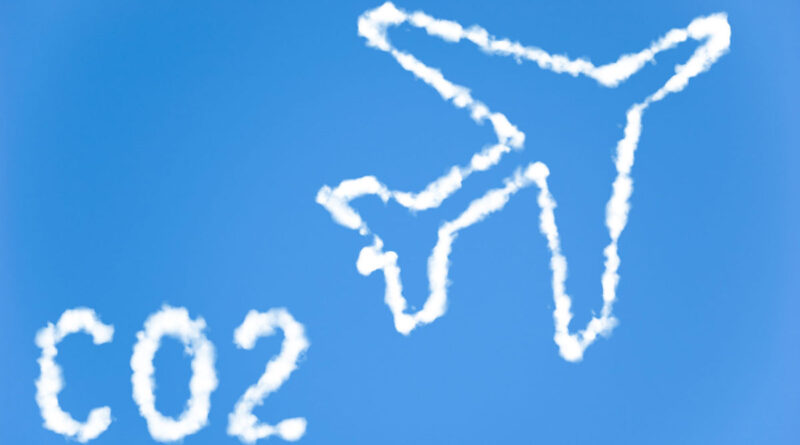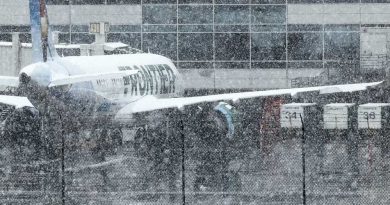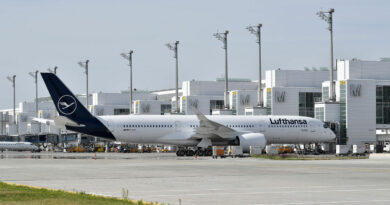Treasury Department issues guidance about tax credits for sustainable aviation fuel
Regulatory guidance from the Treasury Department is likely to pave the way for ethanol-based sustainable aviation fuel (SAF) to be eligible for a federal tax credit program designed to spur production.
Airlines and fuel producers are praising Treasury’s guidance issued Thursday. But it garnered a circumspect reaction from the Environmental Defense Fund.
The program, created as part of the Biden administration’s 2022 Inflation Reduction Act, will provide tax credits of between $1.25 and $1.75 per gallon to fuel producers and air carriers for SAF sales and usage. To qualify for the minimum credit, SAF has to offer a lifecycle emissions reduction of at least 50% relative to traditional kerosene-based jet fuel. SAF that provides reductions of more than 50% will get additional credits.
The goal of the program is to propel SAF production in the U.S. toward a target of 3 billion gallons annually by 2030, enough to account for 10% of U.S. aviation’s fuel consumption. This year, SAF production globally will come in at just more than 150 million gallons, IATA estimates.
At issue in the Treasury Department’s guidance is the methodology that can be used to determine the lifecycle emission benefits of specific SAF products.
As laid out in the authorizing legislation for the tax credit program, lifecycle SAF emissions are to be calculated under the methodology established by the U.N.’s aviation arm, the International Civil Aviation Organization (ICAO), or “any similar methodology.”
Airlines and ethanol producers lobbied the Treasury Department to accept as a similar methodology the calculation system developed by the Department of Energy that is known as GREET. That’s the methodology Congress stipulated for use in a tax credit program for nonaviation biofuels.
At the center of the ICAO-GREET debate is corn- and soy-based ethanol.
GREET, at least under its current guidelines, is expected to attribute lower lifecycle emissions to ethanol-based SAF than the ICAO methodology. The primary reason: It views indirect land-use changes, such as the conversion of food production to ethanol feedstock, less harshly.
Environmental advocates want SAF production to be focused on inputs that create fewer indirect consequences. Among those inputs are forestry residue, garbage, used cooking oil and waste fat.
But producers and airlines have argued that the ICAO methodology is dated since it relies mostly on data published in 2012. Airlines for America (A4A) has also argued that incentivizing a robust slate of SAF feedstock options is the best way to enable the desired SAF production ramp-up.
In its Thursday guidance, the Treasury Department said that for the time being it will use the ICAO standard for determining the lifecycle emissions reductions of various SAF products. But the agency also announced that the federal government will update the GREET evaluation model by March 1, at which point GREET will become a second methodology under which SAF products can be evaluated.
“The updated model will incorporate new data and science, including new modeling of key feedstocks and processes used in aviation fuel,” the Treasury Department said. “The updated model will also integrate other categories of indirect emissions like crop production and livestock activity, in addition to best available science and modeling of indirect land use change emissions.”
The decision appears to be an attempt by the Biden administration to find a middle ground between opposing sides of the debate. Still, it was greeted with praise on Friday by A4A, the Renewable Fuels Association and United Airlines.
“While there are important carbon modeling updates and details that still need to be worked out, we are cautiously optimistic that today’s guidance could open the door to an enormous opportunity for America’s farmers, ethanol producers and airlines,” Renewable Fuels Association president Geoff Cooper said. “The Biden administration is recognizing that the best way to meet ambitious SAF targets is to maximize marketplace flexibility, make use of existing low-carbon fuel assets, and stimulate innovation and competition across the entire supply chain.”
In contrast, the Environmental Defense Fund said the guidance raises questions about sound science, the will of Congress and cutting climate emissions.
“We’ll need to wait until March to see whether the Biden administration will make decisions to award generous sustainable aviation fuel tax credits based on sound science and the congressional intent clearly stated in the Inflation Reduction Act,” said Mark Brownstein, the organization’s senior vice president of energy transition.
Source: Read Full Article



